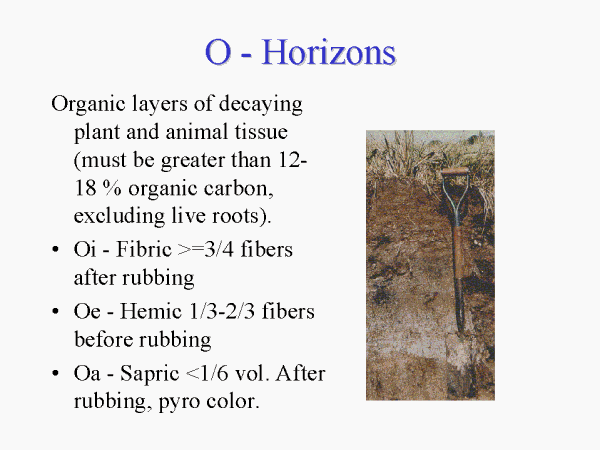| First Previous Next Last Index Home Text Slide 3 of 14 |
 |
Notes:
O horizons: are soil layers with a high percentage of organic matter. Typically within a woodland area there are three distinct organic layers: one of leaves, pine needles and twigs (Oi); underlain by a partially decomposed layer (Oe);and then a very dark layer of well decomposed humus (Oa).
Field criteria:
From Soil Taxonomy:
O horizons or layers: Layers dominated by organic
material. Some are saturated with water for long periods,
or were once saturated but are now artificially drained;
others have never been saturated.
Some O layers consist of undecomposed or partially decomposed litter (such as leaves, needles, twigs, moss, and lichens) that has been deposited on the surface; they may be on top of either mineral or organic soils. Other O layers consist of organic material that was deposited under saturated conditions and has decomposed to varying stages. The mineral fraction of such material constitutes only a small percentage of its volume and generally much less than half of its weight. Some soils consist entirely of materials designated as O horizons or layers.
An O layer may be on the surface of a mineral soil, or at any depth below the surface if it is buried. A horizon formed by the illuviation of organic material into a mineral subsoil is not an O horizon, although some horizons that have formed in this manner contain considerable amounts of organic matter.